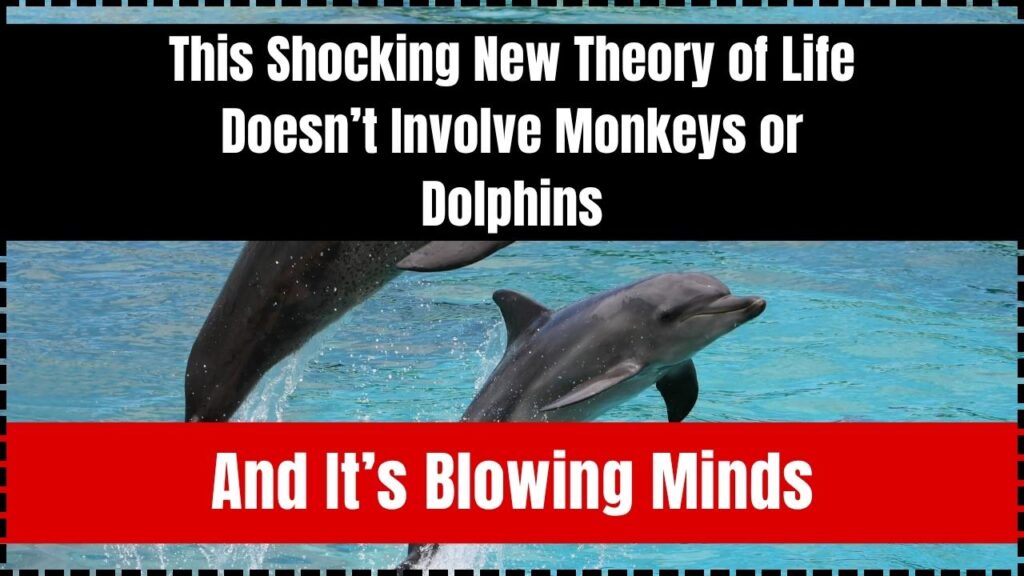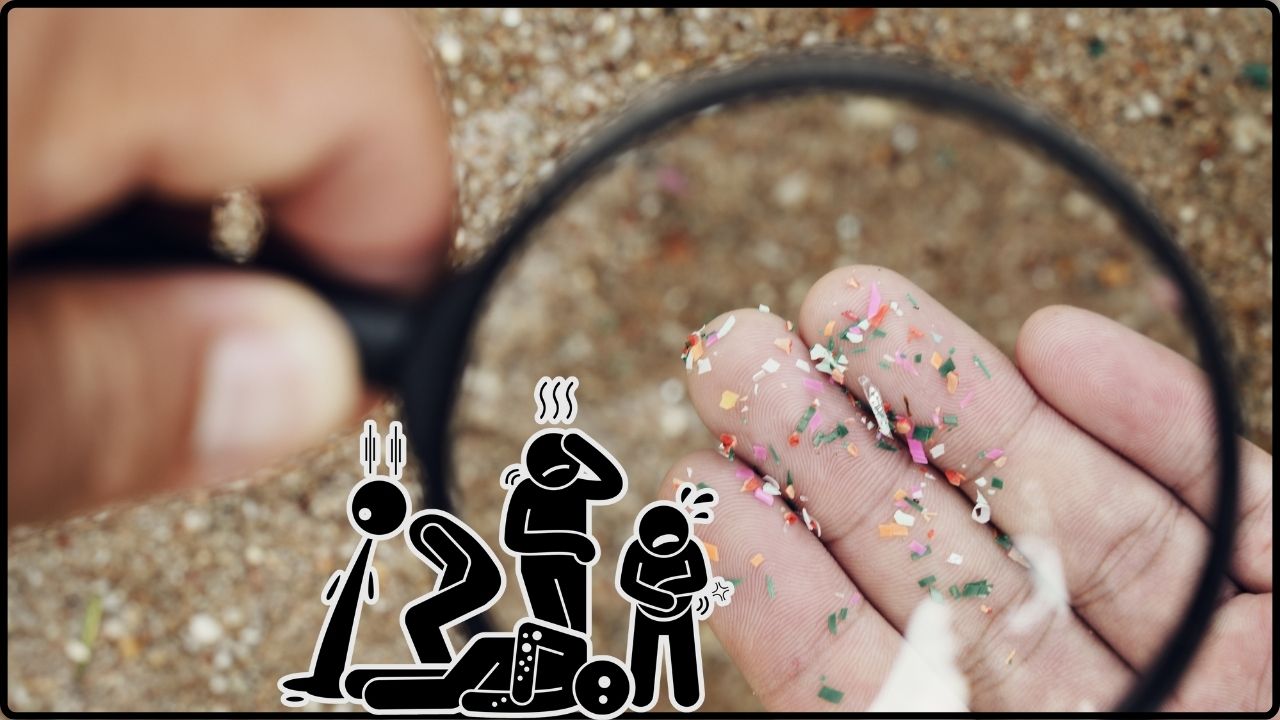This Shocking New Theory of Life Doesn’t Involve Monkeys or Dolphins: Move over, dolphins doing backflips and monkeys using tools—scientists may have just discovered a new theory of life that doesn’t need intelligent animals, or even DNA. It’s called Assembly Theory, and it’s shaking up everything we thought we knew about how life starts, evolves, and exists—not just here on Earth, but possibly anywhere in the universe. Developed by researchers led by Professor Leroy Cronin at the University of Glasgow, this idea is turning heads in biology, chemistry, and even NASA’s alien-hunting programs. This guide breaks it all down—from kid-friendly basics to pro-level insights, with practical takeaways and verified sources.
This Shocking New Theory of Life Doesn’t Involve Monkeys or Dolphins
Assembly Theory is more than a fresh idea—it’s a potential revolution in how we define life, search for it, and even create it. It doesn’t rely on Earth-like systems, animals, or DNA. Instead, it tracks how hard it is to build something—and whether that effort suggests purpose, evolution, or intelligence. As we venture into the stars, map the deepest oceans, and build artificial worlds, Assembly Theory may be the guide that helps us answer humanity’s oldest question: Are we alone?

| Topic | Details |
|---|---|
| Theory Name | Assembly Theory |
| Lead Researcher | Prof. Leroy Cronin, University of Glasgow |
| Definition | Life emerges through the repeated assembly of complex, improbable structures |
| Main Metric | Assembly Index (AI) – measures the steps required to build a structure |
| Notable Implication | Can detect life without DNA, cells, or intelligence |
| Real-World Applications | Astrobiology, drug discovery, synthetic biology |
| Published In | Nature Communications, Scientific American |
| Official Lab Site | Cronin Lab – University of Glasgow |
What Is Assembly Theory?
Imagine you’re building a Lego castle. If it takes 2 blocks, anyone can do it. But if it takes 500 pieces and a step-by-step plan, you know something or someone intentionally built it. That’s the heart of Assembly Theory: the more steps it takes to make something, the less likely it happened by accident.
So, instead of asking, “Is it alive?” based on DNA or behavior, scientists ask, “How hard was it to make this thing?” The more complex and repeated it is, the more life-like it is.
The Assembly Index: The Key to the Theory
The main idea in Assembly Theory is the Assembly Index (AI). It’s a way to score how complex an object is by counting how many steps it takes to build it from scratch.
Example:
- Water (H₂O) → Very low AI – happens easily in nature.
- Protein Molecule → High AI – takes many steps and is very unlikely without biological processes.
- Plastic toy molecule → Also high AI – doesn’t form on its own in nature.
If a molecule has a high Assembly Index and shows up often, there’s a good chance something living or life-like made it.
History and Development of Assembly Theory
Assembly Theory didn’t just pop up overnight. It took years of experimentation and thought. The idea originated with Professor Leroy Cronin, a chemist who had long been fascinated by the question: What is life, really? While most biologists were looking for DNA, Cronin and his team wanted to find a more universal measure—something that applied even to alien life or synthetic systems.
They began by analyzing how complex molecules form and whether this process could be measured objectively. Collaborating with theoretical biologists and physicists, the team created the Assembly Index—a way to track how much work it takes to make something. The more work, the less likely it’s random. It’s like discovering fingerprints at a crime scene—signs that something with purpose was there.
Why This Matters: Applications and Impacts
Space Exploration
NASA and the European Space Agency (ESA) are interested in this theory because it lets us look for life that doesn’t look like Earth life. With Assembly Theory, we can analyze Martian soil or Europa’s ice for complex molecules, not just microbes or water.
Synthetic Biology & AI Life
In the lab, scientists are trying to create artificial life—cells, tissues, or even digital organisms. Assembly Theory helps predict whether a synthetic system will become life-like over time.
Companies in biotech, clean energy, and even AI are exploring this for:
- Growing lab meat
- Creating smart drug molecules
- Modeling evolving software or robotic behavior
Drug Discovery & Chemistry
Pharmaceutical companies are using AI and data tools to predict effective drug candidates. Assembly Index can filter out molecules unlikely to occur naturally, helping scientists target real bioactive compounds faster, cheaper, and more effectively.
How It Shifts the Scientific Paradigm?
| Traditional Evolution | Assembly Theory |
|---|---|
| Starts with DNA, cells | Starts with non-living matter |
| Focuses on replication and fitness | Focuses on assembly and complexity |
| Limited to known biology | Can apply to alien or synthetic systems |
| Detects life by behavior | Detects life by structure |
“This theory bridges physics, chemistry, and biology in a new way.” – Dr. Michael Lachmann, Co-author
A Simple Guide to Understanding This Shocking New Theory of Life Doesn’t Involve Monkeys or Dolphins
Step 1: Understand Assembly Building Blocks
Everything is made of parts. In biology, that’s atoms → molecules → structures.
Step 2: Measure Complexity
Count the minimum number of steps needed to build the object. That’s the Assembly Index.
Step 3: Look for Repetition
If something complex appears over and over again, something (life?) is selecting it.
Step 4: Use AI to Detect Life
Scientists use mass spectrometry and advanced algorithms to find and analyze high-AI molecules.
Real-World Example: Alien Life Detection
In 2023, scientists analyzed deep-sea microbial samples and meteorite materials. Using mass spectrometry, they compared Assembly Indexes across thousands of compounds. The results showed high-AI molecules in biological environments only—not in lifeless meteorite fragments.
This suggests Assembly Theory might work even on non-Earth environments, providing new ways to discover extraterrestrial life—without needing DNA, breathing creatures, or traditional biology.
Challenges and Criticisms of Assembly Theory
As exciting as it is, Assembly Theory hasn’t been welcomed with open arms by everyone. Some researchers argue that complexity alone isn’t enough to define life. They point to systems like crystals, snowflakes, or even hurricanes—naturally forming, yet complex.
Another challenge is the technical difficulty of measuring Assembly Indexes. It requires high-end lab gear and lots of computing power.
Critics also warn the theory may oversimplify biology. Life is not only chemistry—it involves information, interaction, behavior, and adaptation. Assembly Theory solves part of the puzzle, but may not tell the whole story.
The Future of Assembly Theory
Despite criticism, Assembly Theory is gaining momentum. NASA has shown interest in testing it on future missions. Academic institutions are launching interdisciplinary labs to combine chemistry, physics, and data science.
New tools are being developed to calculate Assembly Indexes faster. Future planetary rovers may carry biosignature sensors based on Assembly Theory—capable of identifying life without needing a microscope.
There’s also buzz around integrating the theory with artificial intelligence, allowing machines to simulate evolution and potentially demonstrate life-like behavior in software.
Bonus Section: Glossary of Terms
| Term | Definition |
|---|---|
| Assembly Theory | Explains life by complexity and structure, not behavior |
| Assembly Index | Score of how many steps are needed to build an object |
| Complex Object | A structure with many linked parts that’s unlikely to form randomly |
| Selection | When systems favor certain structures over others |
| Biosignature | A clue or chemical indicator that life is or was present |
Neither Glitch Nor Myth: The Strange Case of Vostok Island’s Disappearance on Google Maps
Nevada Just Struck ‘White Gold’—The Shocking Discovery That Could Fuel the Nation
Sustainable Education: How Schools Are Integrating Environmental Awareness into the Curriculum











